Written By: Emily Cabrera, IPM Communications Coordinator
Expert Sources: Pam Knox, Climatologist; Erick Smith, Blueberry Pomologist
Georgia weather is predictably unpredictable, bitter cold one week and balmy the next. And for that reason, growers are being urged to pay close attention to the weather over the coming months, and be prepared to utilize irrigation for frost protection and potential dry conditions as we move into spring. We are currently in an ENSO neutral year, and weather patterns in those years are more variable and can often create issues with early drought-like conditions as well as late frosts.
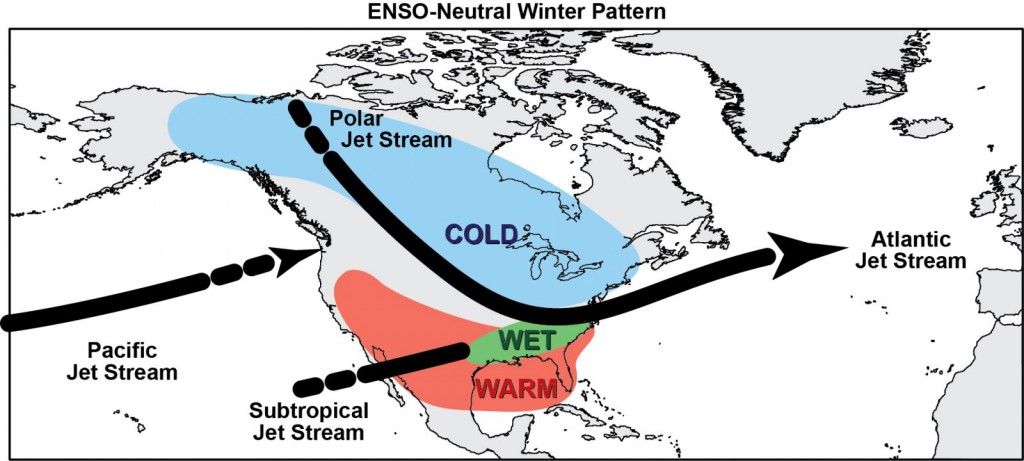
Warmer, wetter winter conditions probable throughout the southeast. (Photo: National Weather Service)
Fortunately, there is currently no drought in Georgia due to wet conditions over the winter, and there is ample soil moisture in many fields. However, drought can reappear at any time, and is more likely when spring comes early as plants come out of dormancy and begin to use more water. Drought last summer and autumn affected most of Georgia’s agricultural areas with the very hot and dry conditions, so some areas may still be dry below the surface.
“The tricky thing is that droughts tend to deliver a one-two punch for growers, as we first get hit with warm, dry conditions in the fall, then if those conditions continue into winter there is not enough recharge to improve water reserves in the soil, so when plants come out of dormancy earlier and start sucking up the groundwater there isn’t enough to sustain those plants as we move into the warmer months, so it becomes a vicious cycle to get ahead of” said UGA Agricultural Climatologist Pam Knox.
“Often times during ENSO neutral years, we see warmer winter months with less chill hours, then as spring buds are beginning to form and flower, we’ll have late frosts that damage those buds and impact harvests” explained Knox. This is particularly important for Georgia’s blueberry growers, who met earlier this month in Alma for the annual Blueberry Update where Knox talked about management strategies to help mitigate the impact of a possible late frost.
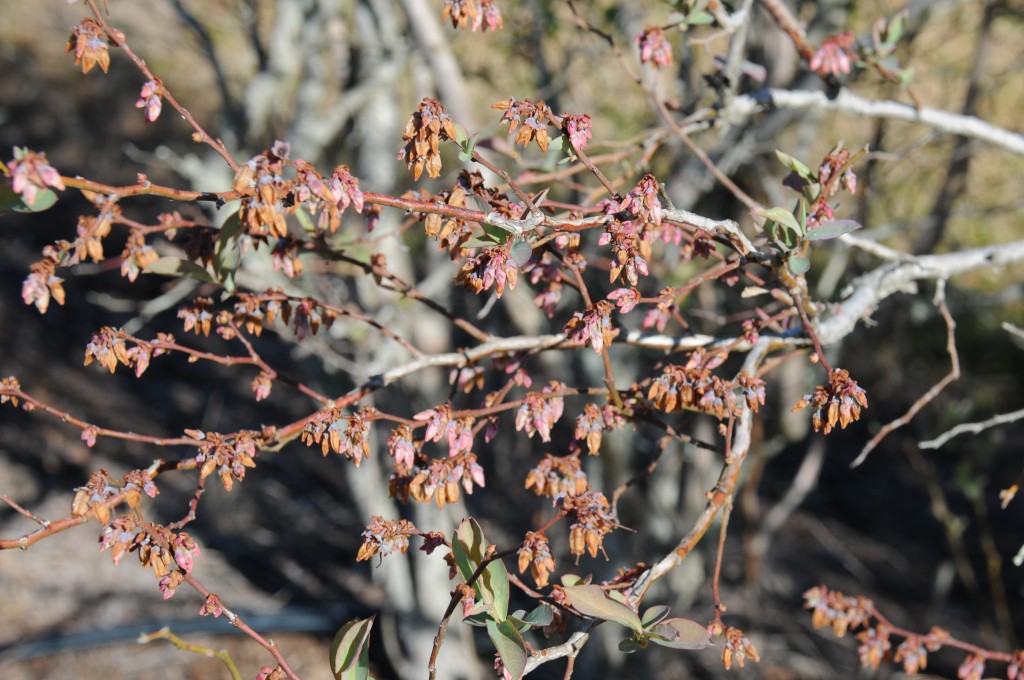
These blueberry bushes were in full bloom when frost conditions occurred. The blooms that were killed will eventually fall of the bush, which will severely impact production. (Photo: Dr. Erick Smith, UGA)
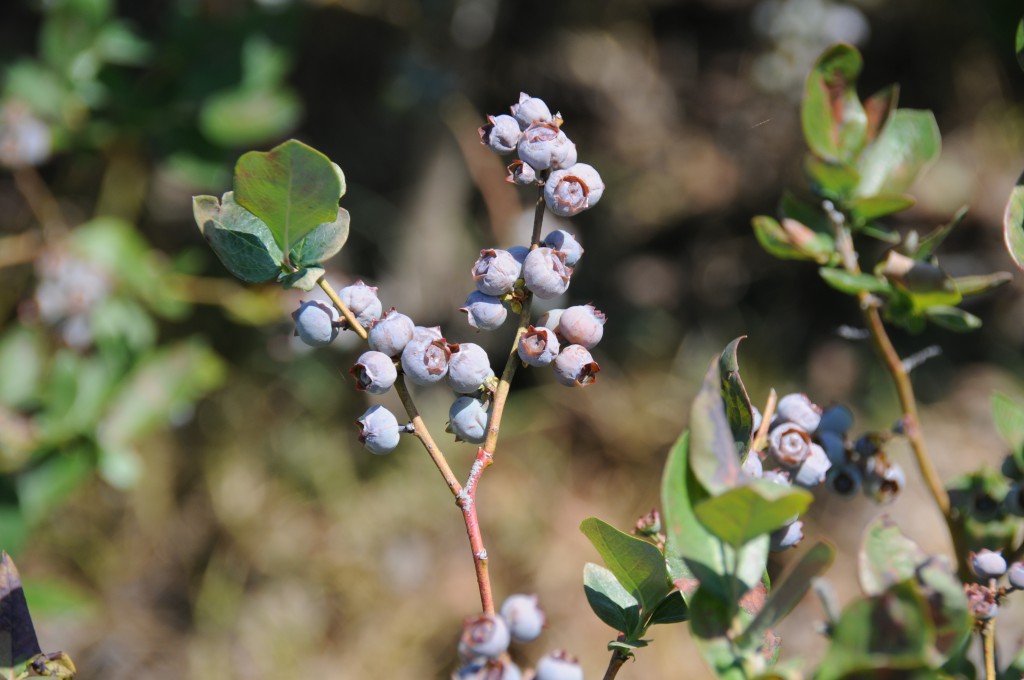
To the untrained eye, these blueberries may not look damaged, but at this stage of development the berries should be a green to slightly pink color. The frost damage has turned the skin blue and the berries are beginning to shrivel. (Photo: Dr. Erick Smith, UGA)
Knox talked about the multiple benefits of using irrigation in blueberry production, first to ensure that enough water is getting to the plants, but also as a potential frost protection strategy if using overhead sprinkler systems.
“Using overhead irrigation as a frost protection method is definitely a complex process. The idea is that if temperatures aren’t predicted to be too low, applying water just before temperatures drop can help insulate plants” Knox explained, “however; this needs to be a careful calculation, because if temperatures drop too low and ice sits on plants too long it can damage the buds and leaves and we can end up with a lot of breakage”.
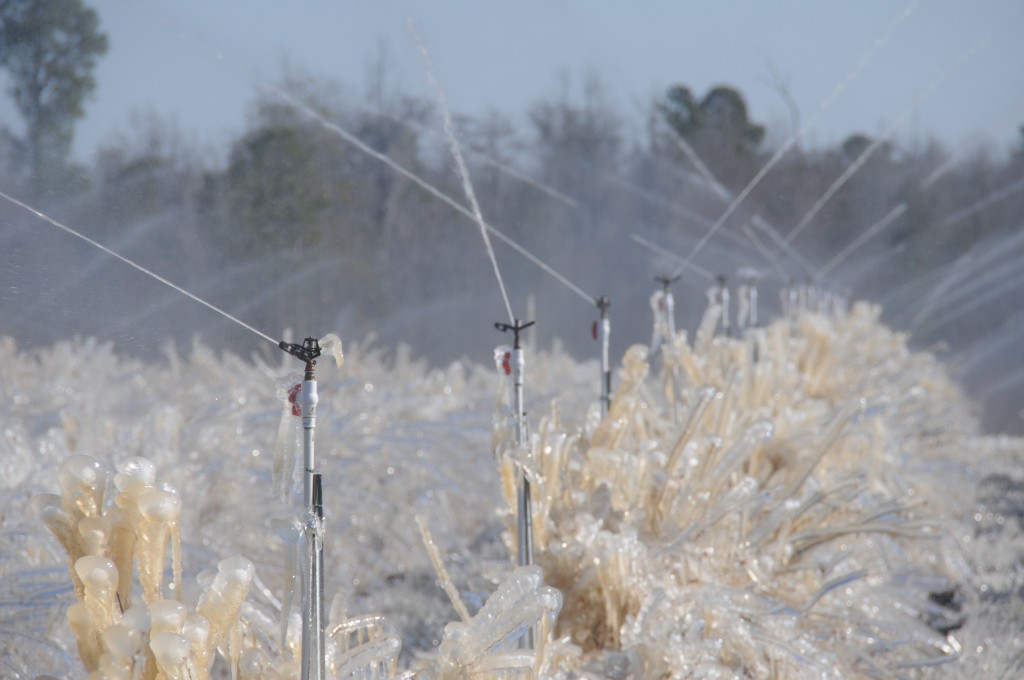
The overhead irrigation here has not been utilized correctly, as evidenced by the “cloudiness” of the ice. (Photo: Dr. Erick Smith, UGA)
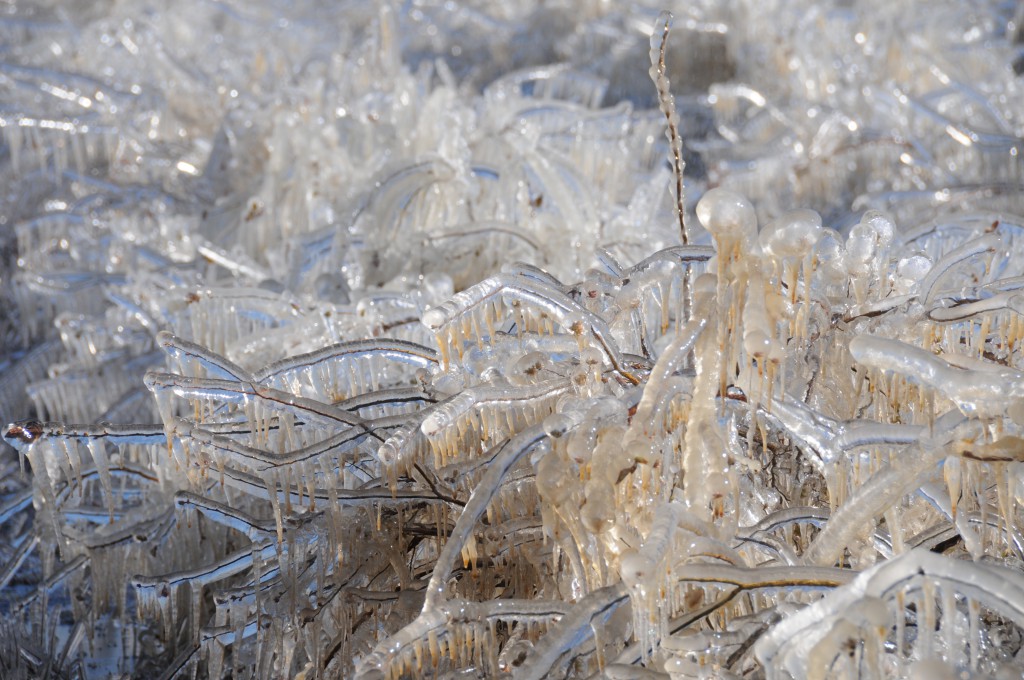
The overhead irrigation used to protect these bushes was applied properly, as evidenced in the “clear” ice. (Photo: Erick Smith, UGA)
Extension Bulletin 1479, ‘Commercial Freeze Protection for Fruits and Vegetables’ is a great resource to learn more about how to protect your crops during these cold and variable months. The bulletin explains various factors that need to be considered when using overhead irrigation as a frost protection method and references the different stages of development to consider.
As we get into spring and more weather data are collected, Knox will be posting updates on her blog, ‘Climate and Agriculture in the Southeast’, that will help producers get a clearer sense of what to expect. Knox also suggests using a combination of weather prediction resources, such as the National Weather Service and the UGA Weather Network. These online resources use data collected from stations throughout Georgia to make the best weather predictions possible down to the hour.